| Srl | Item |
| 1 |
ID:
173822
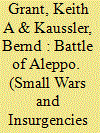

|
|
|
|
|
| Summary/Abstract |
Civilian victimization, whether deliberate or collateral, is a common occurrence in civil war. This study investigates patterns of civilian victimization during the 5-year Battle of Aleppo, a major campaign of the Syrian Civil War in which there were 24,462 documented civilian fatalities. We argue that the primary belligerents and their external patrons respond to shifts in the conflict’s strategic balance of power, employing more indiscriminate force when their opponent is gaining advantage, resulting in higher civilian fatalities. A quantitative analysis of the Battle of Aleppo models weekly civilian fatalities as a function of belligerents’ conflict initiation interacted with regime and rebel offensives aimed at shifting the status quo. While regime-initiated conflict events appear to be the primary determinant of civilian fatalities, our analysis finds that conflict events initiated by the opposition forces during periods of rebel offensive gains are associated with fewer civilian casualties, while pro-government external intervention during rebel offensives is associated with elevated civilian fatalities. We expand on these findings through a focused case study of third party intervention during the final year of the battle, with emphasis on the Russian intervention on behalf of the Syrian Regime that broke the opposition’s final counteroffensive.
|
|
|
|
|
|
|
|
|
|
|
|
|
|
|
|
| 2 |
ID:
149839
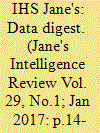

|
|
|
| 3 |
ID:
149693
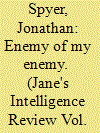

|
|
|
|
|
| Summary/Abstract |
Five years after its inception, the mainly Sunni Arab insurgency against the Syrian government is undefeated. Reporting from the Syrian-Turkish border, Jonathan Spyer examines the operational outlook and motivations of these disparate groups.
|
|
|
|
|
|
|
|
|
|
|
|
|
|
|
|
| 4 |
ID:
158397
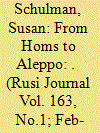

|
|
|
|
|
| Summary/Abstract |
A year after the fall of Aleppo, the city is struggling back to life.
A sign saying #Believe_In_Aleppo in big letters stands proudly in front of the fortified walls of the citadel, which has stood guard over the city for centuries.
|
|
|
|
|
|
|
|
|
|
|
|
|
|
|
|
| 5 |
ID:
154171
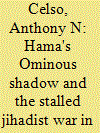

|
|
|
|
|
| Summary/Abstract |
Little has been written about the Syrian Civil War and its relationship to the 1980s revolutionary period. This essay examines this historical connection and emphasizes the unique features that drive the current rebellion. The essay has five sections. First, it lays out the historical roots of the current confessional-political conflict. Second, it provides an overview of the Muslim Brotherhood – led 1979 – 82 rebellion and its defeat in Hama. Third, it discusses the role that the Muslim Brotherhood revolt plays in the current conflict. Fourth, it analyzes jihadist infighting that has weakened the insurgency. Finally, it assesses the role that Russian, Iranian, and Hezbollah intervention has had in bolstering the regime of Bashar al-Assad. Syria's jihadist revolt has limited but important parallels to the failed 1982 Muslim Brotherhood insurrection. Even with the regime's conquest of Aleppo, the Islamist defeat in today's war is far from certain, although the current jihadist insurgency has stalled.
|
|
|
|
|
|
|
|
|
|
|
|
|
|
|
|
| 6 |
ID:
124471
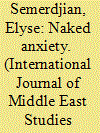

|
|
|
|
|
| Publication |
2013.
|
| Summary/Abstract |
In the 18th century, non-Muslims and women crossed social boundaries during a period of increased global consumption, prompting intervention on the part of Ottoman officials. On the imperial level, the sultan promulgated edicts to restrict such crossings, following the path of earlier laws that had regulated public spaces including bathhouses. In Aleppo, a local reflection of these 18th-century trends was increased monitoring of nudity and of contact between Muslims and non-Muslims within the city's bathhouses. Regulations required that bathkeepers provide separate bath sundries for Muslims and non-Muslims and prohibited co-confessional bathing for women in particular. With the assistance of guilds-and to a lesser extent millet representatives-complex bathing schedules for Muslim and non-Muslim women were registered at court to support segregation policies. Jurists discussing modesty requirements for Muslim women declared that non-Muslim (dhimm?) women were to be treated as unrelated men in that they were forbidden to gaze upon a naked Muslim woman. Shari?a court rulings were constructed along similar lines, indicating that the dhimm? woman was an unstable, liminal social category because in some circumstances her gaze was gendered male. Muslim male elites and local guilds ultimately instituted segregated bathing schedules to protect the purity of Muslim women from the danger posed by the dhimm? female figure.
|
|
|
|
|
|
|
|
|
|
|
|
|
|
|
|
| 7 |
ID:
192243
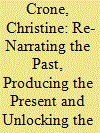

|
|
|
|
|
| Summary/Abstract |
Regaining control of Aleppo was an important symbolic victory for the Syrian state army, which has opened the way for state-sanctioned narrations of ‘post-war’ Syria. To elucidate the workings of this narration, I explore the TV drama Haris al-Quds (2020) as a fascinating window into Syrian state ideology in Bashar al-Assad’s ‘post-war’ Syria. I argue that the Syrian state holds on to future visions of the past while re-narrating history to fine-tune its ideological heritage in a state-endorsed and state-endorsing TV drama. The serial’s interweaving of selected historical times allows for the experience of alternative narrative times, constructing what I refer to as resistance time, Manichaean time, and restoration time. In this play with temporality, each time serves in different ways as a promotion of a particular ideological understanding of Syria.
|
|
|
|
|
|
|
|
|
|
|
|
|
|
|
|
| 8 |
ID:
192433
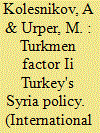

|
|
|
|
|
| Summary/Abstract |
THE Turkmens, an ethno-confessional Turkic group that has been living on Syrian territory for centuries, are the third largest group in Syria after the Arabs and Kurds. It is believed that Turkmens migrated to the area from Central Asia before the historical Battle of Manzikert. Turkic migration to Syria can be divided into three waves.
|
|
|
|
|
|
|
|
|
|
|
|
|
|
|
|